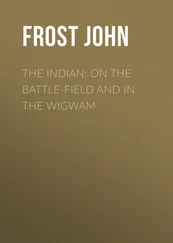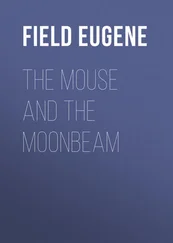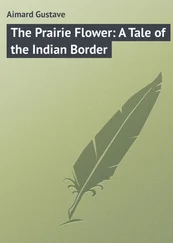Eugene Ware - The Indian War of 1864
Здесь есть возможность читать онлайн «Eugene Ware - The Indian War of 1864» весь текст электронной книги совершенно бесплатно (целиком полную версию без сокращений). В некоторых случаях можно слушать аудио, скачать через торрент в формате fb2 и присутствует краткое содержание. Жанр: Историческая проза, на английском языке. Описание произведения, (предисловие) а так же отзывы посетителей доступны на портале библиотеки ЛибКат.
- Название:The Indian War of 1864
- Автор:
- Жанр:
- Год:неизвестен
- ISBN:нет данных
- Рейтинг книги:3 / 5. Голосов: 1
-
Избранное:Добавить в избранное
- Отзывы:
-
Ваша оценка:
- 60
- 1
- 2
- 3
- 4
- 5
The Indian War of 1864: краткое содержание, описание и аннотация
Предлагаем к чтению аннотацию, описание, краткое содержание или предисловие (зависит от того, что написал сам автор книги «The Indian War of 1864»). Если вы не нашли необходимую информацию о книге — напишите в комментариях, мы постараемся отыскать её.
The Indian War of 1864 — читать онлайн бесплатно полную книгу (весь текст) целиком
Ниже представлен текст книги, разбитый по страницам. Система сохранения места последней прочитанной страницы, позволяет с удобством читать онлайн бесплатно книгу «The Indian War of 1864», без необходимости каждый раз заново искать на чём Вы остановились. Поставьте закладку, и сможете в любой момент перейти на страницу, на которой закончили чтение.
Интервал:
Закладка:
In the morning a conference was had at post headquarters, which was decorated with flags; speeches were made, and the evils and misfortunes of the last five years were gone over. Col. Maynadier told of the expected coming of the commissioners, and made a speech. He said: "There is room enough for all of us in this broad country." Pointing to the silk flag of the Eleventh Ohio Cavalry, hanging from the wall, Col. Maynadier said: "My Indian brother, look at those stripes. Some of them are red, and some of them are white. They remain peacefully side by side – the red and the white – for there is room for each."
After this there was a brief interval of peace. A full account of this funeral may be found in the St. Louis newspapers of March, 1866.
With the grass came the commissioners. Then came the Union Pacific Railroad. Then came Indian resistance. Then war again. Then the decadence of the Sioux nation.
The daughter of Shan-tag-a-lisk was an individual of a type found in all lands, at all times, and among all peoples: she was misplaced.
Her story is the story of the persistent melancholy of the human race; of kings born in hovels, and dying there; of geniuses born where genius is a crime; of heroes born before their age, and dying unsung; of beauty born where its gift was fatal; of mercy born among wolves, and fighting for life; of statesmen born to find society not yet ripe for their labors to begin, and bidding the world adieu from the scaffold.
We all of us know what it is to feel that at times we are out of tune with the world, but ever and anon we strike a node and come back into temporary harmony; but there are those who are never in tune. They are not alone the weak; they are the strong and the weak; they are the ambitious and as well also the loving, the tender, the true, and the merciful.
The daughter of Shan-tag-a-lisk wanted to find somebody to love worth loving. Her soul bled to death. Like an epidendrum, she was feeding upon the air.
When wealth and civilization shall have brought to the Rocky Mountains the culture and population which in time shall come, the daughter of Shan-tag-a-lisk should not be forgotten; it may be said of her, in the words of Buddha:
"Amid the brambles and rubbish thrown over into the road, a lily may grow."
Appendix B.
LIEUT. FITCH'S REPORT ON THE SMOKY HILL ROUTE.
FORT LEAVENWORTH, Sept. 25th, 1865.
MAJOR:
Sir – I have the honor to report that in compliance with Special Order No. 143, Hd. Qrs., Dept. of Missouri, dated Fort Leavenworth, June 9th, 1865, I left Fort Leavenworth on the 13th of June to accompany the Butterfield Surveying Expedition on the route to Denver City, via Smoky Hill River.
No assistance having been furnished me, and my instructions authorizing me to employ such as I might need, I employed Chas. H. Fitch as First assistant, and Daniel Clark as scout and Second assistant; and with my party fully equipped I took the old Fort Riley road, which I followed as far as Fort Riley.
At this point we were joined by Major Pritchard of the Second Colorado Cavalry, who was in command of the escort, which at this time consisted of two companies of the Third Wisconsin Cavalry, under Capt. Pond. From that point I proceeded on the Fort Larned road as far as Fort Ellsworth, on the Smoky Hill River, at which point I diverged from the old road and bore west up the river on the north side. Having been instructed to report all streams that should be bridged, and their depth and width, together with the estimated cost of such bridges, I commenced my observations on the old road, as I found that the only difficult part of the route, at a point fifty miles west of Fort Leavenworth, on the west side of Soldier River. The road enters upon the Pottawatomie Reserve, and through the entire reserve for a distance of thirty miles will be found innumerable small streams, most of which should be bridged. It being Indian land, private enterprise is not available, and the United States is now paying toll over no less than four bridges in a distance of thirty miles. All of these streams could be bridged for a sum not exceeding that now paid for toll in the course of a year. At present there is no bridge across Cross Creek, it having washed away while I was camped on its banks.
Between the Reserve and Fort Riley, a distance of thirty-five miles, the streams are good and need no bridges. Directly, at Riley, on its west side running through the Reserve and by its junction with the Smoky Hill forming the Kansas River, is the Republican, the largest tributary of the Kansas with the exception of the Smoky Hill. At the crossing of this river on the Military Reserve is a ferry belonging to private parties, and the Government is paying toll daily for crossing its own teams on its own reserve. This stream should be spanned by a good, substantial structure, though its cost will be considerable owing to the size and nature of the stream. I did not make an estimate of the cost of bridging, as I supposed it had already been done by engineers stationed at Fort Riley.
Leaving Fort Riley, on the Fort Larned road passing through Junction City, at a distance of thirty-five miles, we crossed the Solomon's Ford of the Smoky Hill at Whittly's Ferry. The Solomon is a fine rapid stream, with high banks, and has a water-course eighty feet in width; will require a span of two hundred feet, which can be put up there at a cost of $6,000. Should there be stone piers erected, it would cost considerable more, as the country is level and affords but little building-rock. The bridge could be built to advantage at this particular point, as there is a high island right in the middle of the stream that would afford a good foundation for a pier or bent to the bridge.
The country on this stream is the finest stretch of land in Kansas, having no bluffs, and a soil ranging from five to twenty feet in thickness, while all the streams in the neighborhood are very heavily timbered. The stream bears southeast into Smoky Hill, one mile below where we crossed it. After crossing we bear a little south of west, across a high level bottom between the Smoky Hill, the Solomon and the Saline, and at a distance of eight miles we cross the Saline at Woodward's Ferry; the upper ferry being impracticable on account of the road leading to it. The Saline is a fork of the Smoky Hill, similar to the Solomon, with the exception that the water is impregnated with salt, and it will require about the same bridge. Country is level and the timber fine. Two miles and a half west, we again touched the Smoky Hill, at Salina, the county seat of Dickson, on the eastern terminus of the great bend of the Smoky Hill, bearing south of west from Saline.
At a distance of thirty-two miles we reached Fort Ellsworth, on the western terminus of the great bend of Smoky Hill. Here we were joined by two companies of the Thirteenth Missouri Cavalry, under command of Capts. McMichael and Snell.
After resting a day and killing a few buffalo, which we now found in considerable numbers, and diverging from the old road, we bore a little north of west upon the north side of the Smoky Hill River, near our old trail of 1860, which had at this time become entirely obliterated. Our road from this point lay over a broad stretch of level bench-land, covered with a luxuriant growth of buffalo-grass, intersected every three or five miles with fine streams of water. Our party at this time consisted of Col. Eaton and his party of constructionists, twenty-six in number; eleven of our mule-wagons loaded with tools, reapers, and everything necessary for putting the road in fine condition; Major Pritchard; two hundred and fifty cavalry as escort, and the Engineer Corps. On the 14th day of July, with everything looking fair and all in good spirits, we started on our work. I was accompanied by my wife and Capt. West by his.
Читать дальшеИнтервал:
Закладка:
Похожие книги на «The Indian War of 1864»
Представляем Вашему вниманию похожие книги на «The Indian War of 1864» списком для выбора. Мы отобрали схожую по названию и смыслу литературу в надежде предоставить читателям больше вариантов отыскать новые, интересные, ещё непрочитанные произведения.
Обсуждение, отзывы о книге «The Indian War of 1864» и просто собственные мнения читателей. Оставьте ваши комментарии, напишите, что Вы думаете о произведении, его смысле или главных героях. Укажите что конкретно понравилось, а что нет, и почему Вы так считаете.












